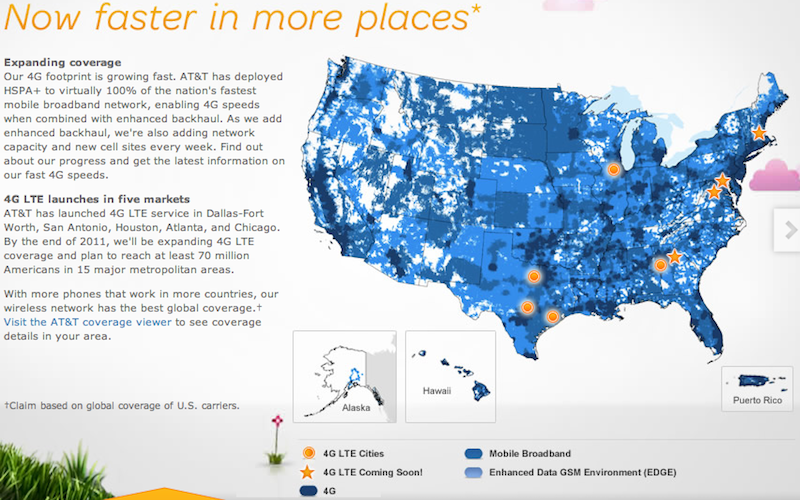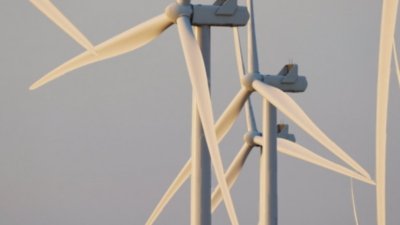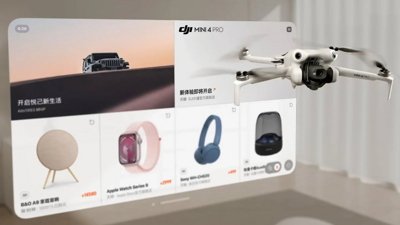AT&T adds new 4G LTE markets, two new 4G Android phones
AT&T said it will expand its 4G LTE service currently limited to Atlanta, Chicago, Dallas-Fort Worth, Houston, and San Antonio, adding new support in the Athens, GA, Baltimore, Boston, and Washington D.C. markets. It plans to expand service to 15 markets in the US by the end of the year.
At the same time, the carrier is introducing its first 4G LTE phones, the HTC Vivid and Samsung Galaxy S II Skyrocket. Previously, AT&T's LTE network as only been accessible via laptop WWAN dongles.
Apple hasn't introduced LTE support in its iPhone lineup, instead offering three 3G models on AT&T's network: the iPhone 3GS with support for 7.2 Mbps HSDPA (downloads) but only 384 kbps uploads; an iPhone 4 capable of 7.2 Mbps HSDPA (downloads) and 5.76 HSUPA (uploads); and the new iPhone 4S with support for 14.4 Mbps HSDPA (downloads) and 5.76 HSUPA (uploads).
The faster new HSUPA upload support in iPhone 4 resulted in much faster uploads last year, and the twice as speedy download potential of the iPhone 4S should similarly make a big difference to users, if the carriers actually support its potential from the tower to their backbone networks.
AT&T's efforts to build out 4G LTE is therefore not exclusive to benefitting 4G phones. Because the carrier's existing HSPA network is served by the same backhaul service, the improvements made to support 4G service will also increase throughput for iPhone 3GS, 4 and 4S users. The company now depicts HSPA service as darkest blue "4G" on a map next to the few starred cities where 4G LTE is available.
Preliminary results of testing iPhone 4S across all three US carriers indicates that AT&T's data network is already far faster than the competing CDMA EvDo networks of Verizon and Sprint, although AT&T's 3G coverage does not offer as much coverage in all areas.
That reality has resulted in Sprint and Verizon working to build out the next generation of 4G networks earlier, while AT&T has worked to build LTE in tandem with improving upon its existing HSPA/HSPA+ network, which is capable of delivering competitive data service with 4G speeds to many of today's phones, at lower battery consumption rates.
In many markets however, AT&T isn't yet exploiting even the 7.2 Mbps capacity of the 2009 iPhone 3GS, stating earlier this month to developers that "AT&T has engineered its network so that most users' experience typical downlink throughput rates of 700 kilobits per second (Kbps) to 1.7 Mbps, with bursts over 1 Mbps. Typical uplink rates are 500 Kbps to 1.2 Mbps."
Verizon began selling both 4G Android phones and a CDMA 3G EvDo-capable iPhone 4 earlier this year, but has consistently reported that it was selling more iPhone 4 units than all of its 4G models and devices combined. In the most recent third quarter, Verizon reported sales of 2 million iPhone 4 (at the time over a year old as a model) but only 1.4 million LTE devices of any kind.
Sprint has similarly heavily promoted its own 4G service and Android phones this year, but invested billions to carry the iPhone after noting that Apple's smartphone was the primary reason it was losing subscribers.
 Daniel Eran Dilger
Daniel Eran Dilger











 Amber Neely
Amber Neely
 William Gallagher
William Gallagher

 Malcolm Owen
Malcolm Owen











